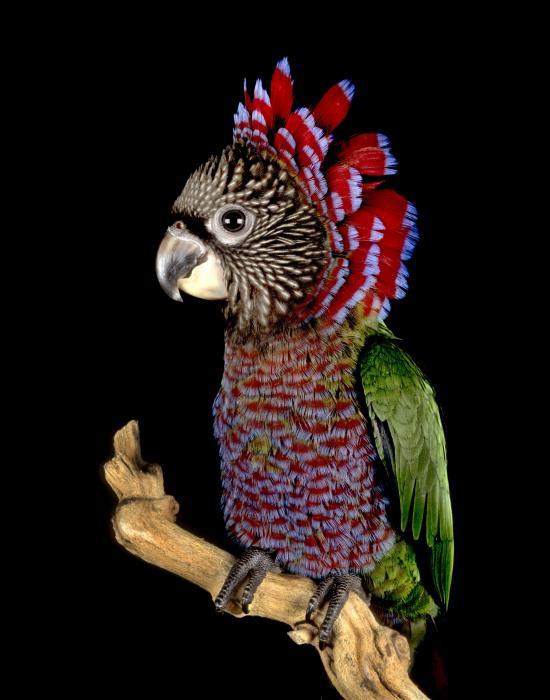The red fan parrot (Deroptyus accipitrinus) is a species of New World parrot found in South America (the term New World is given to animals which are located in the Americas). This parrot is rated as 'Least Concern' by the IUCN.
Physical Features
 |
| The ruffed feathers of a red fan parrot |
Distribution and Habitat
This bird is found in the northern part of South America. Most of the population is found in the Amazonian Rainforest. It is specifically found in Guiana and Brazil. It lives in rainforests, grasslands and woodlands.
Diet
The red fan parrot feeds on the fruits found in the canopy of a rainforest.
Behavior
The red fan parrot reveals its beautiful feathers when it is alarmed. It is seen in pairs or groups which rarely exceed 20 individuals. This parrot is often seen swaying side to side and while making a whining noise.
Breeding
The red fan parrot normally breeds in December or January. After mating, they occupy abandoned nests. The eggs require an incubation period of 25 days. The males protect the females during incubation. The females lay about 3 eggs every year. The average life expectancy of a red fan parrot is 40 years.
Conservation
